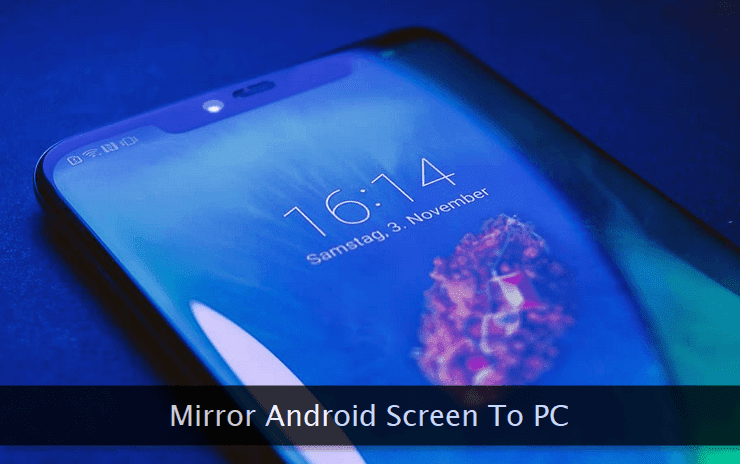Nowadays, projecting the screen of one device onto another's screen is quite common. People often project screens of various devices to their smart TVs. Today, we're going to learn how to cast or mirror an Android smartphone's screen to a Windows PC. It applies to other platforms (Mac and Linux) as well. Although there are several premium tools and software to help you do the same, we'll take a look at the free and easiest solution to get the job done. Make sure you're not running a very old version of Android and have at least Windows 7 on your PC. Let's mirror our Android smartphone screen on a PC.

I've tested this method with both a Samsung and a Realme smartphone. In both cases, it worked flawlessly—in one go. If you follow the instructions correctly, it should work for you too.
It's a straightforward 3-step process and almost anyone can do it even if you're a bit technically challenged. Without wasting any time, let's quickly dive into the Android screen mirroring process.
1. Get the SCRCPY Application
Start with downloading the scrcpy application. It's a free and open-source application.
You don't need rooting of an Android device to use this application.
It comes in a zip file format. Simply download it and extract the application's files in a separate folder.
2. Enable USB Debugging on Your Smartphone
After you've grabbed the SCRCPY application, go ahead and enable the USB Debugging option on your smartphone. Here's a step-by-step tutorial about how to do it.
Different smartphone models have slightly different paths to the USB Debugging option in the settings menu. To get started, go to the Settings → About Phone menu option.

Here, you'll find the Version → Build number option. On some of the smartphone models, you can access it through the Software Information → Build number menu option.

To activate the Developer Options menu, tap on the Build number option 7 times. The phone may prompt you to enter the unlock code to activate this option.
Again, different smartphone models have slightly different paths to access the USB Debugging option we intend to activate.
It can either be accessed through the Settings → Developer Settings → USB debugging section or you can find it through the Additional Settings → Developer options → USB debugging option.

Here's a guide to help you choose the path for the USB Debugging option in different smartphone models. Remember, after enabling this option, the Antivirus application (if any) may alert you about it. Simply dismiss it and move ahead.
3. Connect the Smartphone to the PC Through a USB Cable
The next important step is about connecting your Android smartphone to your Windows PC. Now, here are some pointers that may help you in doing it correctly.
Do not use any third-party USB cable. It may not work at all. Either use a USB cable sold separately by your smartphone's company or detach the cable from your phone's charger and use it for the connection.
The latter approach will guarantee that no issues will arise and your device will be detected—easily.

Make sure to keep the phone in an unlocked state before connecting the USB cable. After connecting, you'll be prompted (see image above) to select the connection mode. Select the Transfer Files / Android Auto option as indicated by the red arrow.

A couple of seconds after selecting the connection mode, another prompt (see image above) will appear asking you to allow your PC to use the USB debugging feature of the connected smartphone.
Simply, click the ALLOW button. If you're on a home computer, you can check the box too so that this prompt does not reappear every time you connect your mobile device.
4. Launch SCRCPY and Access the Android Screen on Your PC
The last step is dead simple. All you have to do is to launch the scrcpy.exe executable file. Double-click it to start the application and you're good to go.

But what if you start the application without first connecting your smartphone (via USB cable) to the PC? See the image above where I launched the application without connecting my smartphone.
As you can see, the mobile device is not detected by the application, and the process is aborted.

If connected, the application detects the mobile device and mirrors the screen on your PC. You can see in the image above that the phone's brand and the Android version running on the device are detected.
The screen resolution of the mobile device is also detected by the application.

And here's how it looks (see image above) on my PC. The latency of screen mirroring done through this application is almost negligible. It's near to real-time such that you can easily play quick-action video games—without any issues.
Both the mouse and the keyboard can be used freely in the mirrored image. The sound (audio stream) is also captured through this application.
Run something in landscape mode on your mobile and the mirrored screen too will go in horizontal landscape mode on your PC. Thereafter, you can maximize the mirrored screen window to cover the entire desktop.
So, that's it! This application is one of the best and most reliable methods to cast your Android device on your PC. Try it once.
